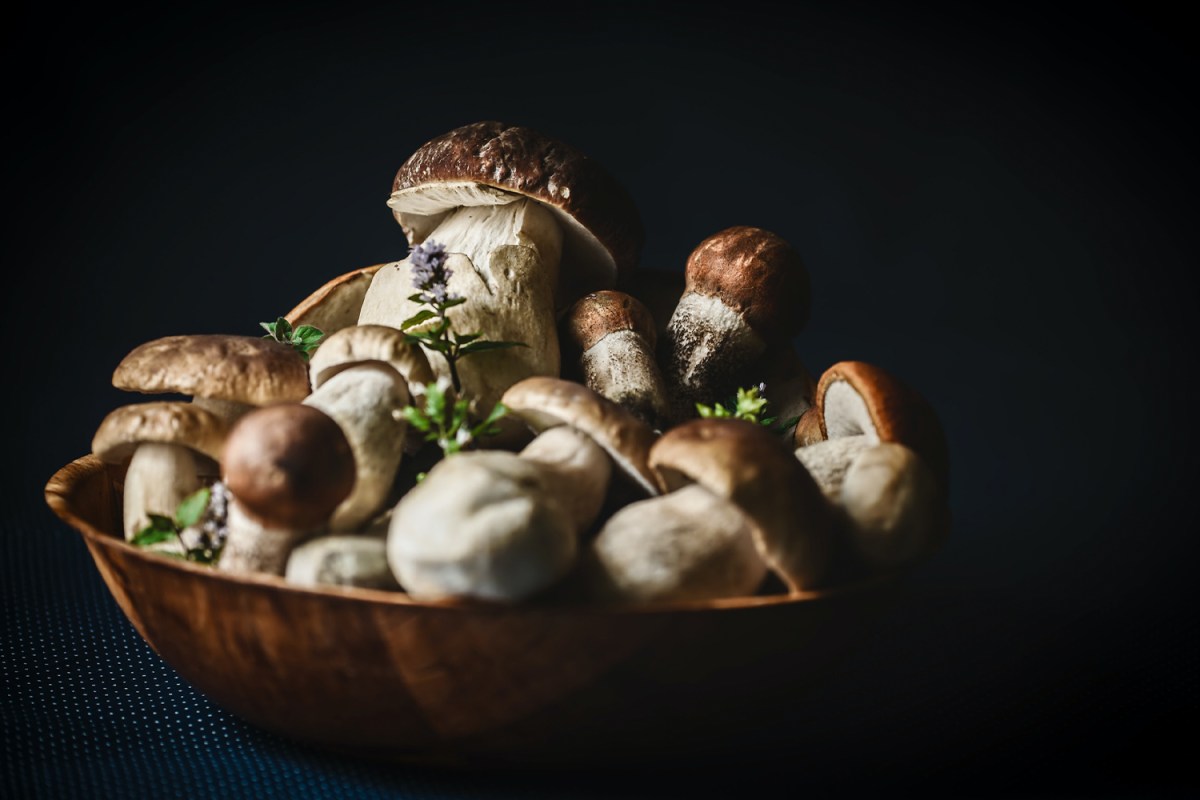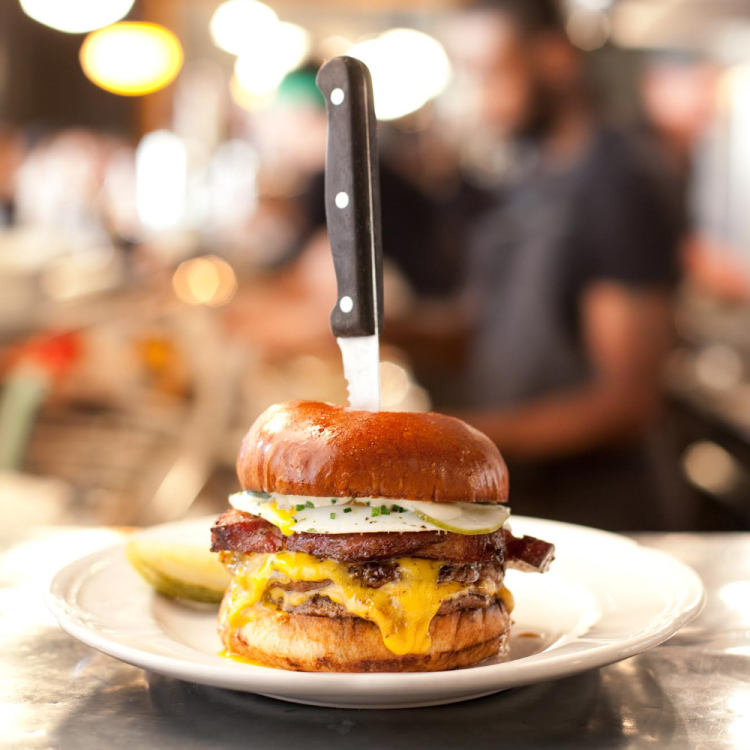If you’ve eaten a first-rate mushroom at a five-star restaurant, chances are good that Joe Weber — founder of Four Star Mushrooms, an indoor mushroom farm in Logan Square — grew it.
Since opening in September 2019, Four Star has supplied gourmet mushrooms to some 25 Chicago restaurants, ranging from Alinea and GT Prime Steakhouse to Elizabeth and vegan-newcomer Fancy Plants Cafe. Whether it’s the white, fluffy lion’s mane, the barnacle-like blue oyster, the aptly named black pearl or the more well-known king oyster, Weber’s pristine non-GMO mushrooms, grown without the use of pesticides or fertilizer, have quickly earned favorite-fungi status among local chefs.
Weber hasn’t always been a mushroom lover: Growing up in Hoffman Estates, he didn’t think much about mushrooms at all, beyond the rare occasions when they’d appear on his family’s dinner table. Other interests pushed mycology to the fore.
“I’ve always had this deep interest in ecology, habitat restoration and biodiversity,” says Weber, who graduated in 2018 from the University of Illinois at Urbana-Champaign with a bachelor’s of science degree in biology. “I learned through one of my ecology classes that agriculture is the largest cause of habit and biodiversity loss. I came at this trying to solve that problem.”
After some YouTube and podcast deep dives — Weber is a big fan of renowned mycologist Paul Stamets — Weber got excited about the environmentally friendly qualities of indoor mushroom growing, as well as the potential medicinal and health benefits of eating them. With the help and support of his entrepreneurship-expert dad, who literally wrote a book on creating a successful business, Weber started Four Star Mushrooms inside a 400-square-foot space in a multi-use Logan Square building. As he got better at managing the various growing stages, he took over the space next door, tripling Four Star’s footprint and increasing his mushroom output to 500 pounds a week to keep up with demand.
Weber’s not the only one who’s become obsessed with growing these wonderfully weird foodstuffs. Whether it’s the desire for plant-based eating or the pandemic-inspired growth of DIY trends, regular folk are getting in on at-home mycology too (check out this recent New York Times article for further proof). “Mushrooms are easy to grow, resistant to contamination and they don’t need a ton of attention,” he says.
Local Foods now sells Four Star Mushrooms in ½-pound bags. And if you’re DIYing it, these are some of Weber’s top mushroom-growing tips — including his recipe for an easy, at-home dish.
When it comes to at-home mushroom kits, the most important thing is to make sure the inoculated bag is kept humid and wet, especially when it’s first starting to pin (the stage when the little mushrooms first appear). Weber recommends misting a few times a day. Misting the inside of a round Tupperware container and placing it over the mushroom bag’s X-shaped opening a few times a day can provide additional moisture. As the mushrooms get bigger, they need more fresh air and a little less humidity.
Enough air exchange is also crucial, says Weber, especially to prevent long, chewy stems. A fan can help, but keep in mind the adverse effect it might have on humidity. Bathrooms, with increased humidity and a fan, could offer an ideal mushroom-growing environment.
Once you start harvesting, be mindful not to extract large quantities of substrate (growing material) with your mushrooms — with the right care, each bag can yield a few flushes of growth. “I’ve heard people fruiting oyster mushrooms up to 6 to 8 times from one bag,” says Weber.
When it comes to cooking mushrooms, Weber likes to use a wok. Starting out on high heat, he adds chopped or sliced mushrooms and begins a dry sauté until mushrooms are hissing, which means they are releasing moisture. Once the mushrooms take on a light brown color, Weber adds a drizzle of avocado oil, vegetables (various peppers and onion, perhaps) and a seasoning mixture with powdered garlic, chili powder and black pepper. After cooking for a few minutes, turn heat down to medium-high. Once vegetables have softened, Weber adds in a sauce, which might include teriyaki sauce or, his favorite, honey sesame. Lower heat to medium-low and add additional sauce and salt. (Weber is a fan of garlic salt.) Note: The fresher the mushrooms, the more water they contain.
Join America's Fastest Growing Spirits Newsletter THE SPILL. Unlock all the reviews, recipes and revelry — and get 15% off award-winning La Tierra de Acre Mezcal.























